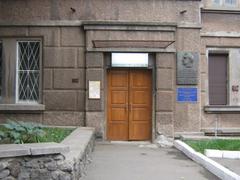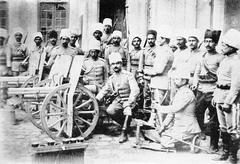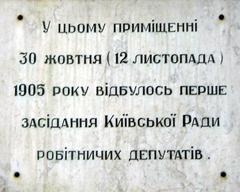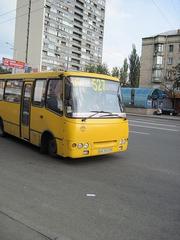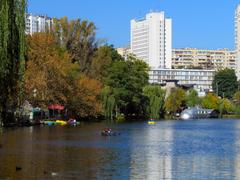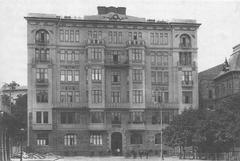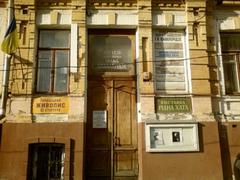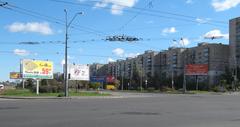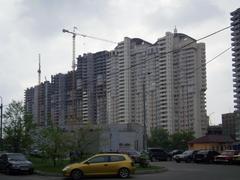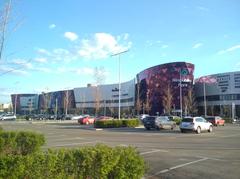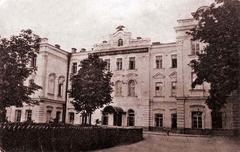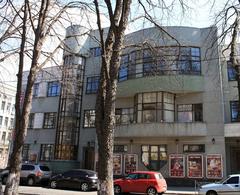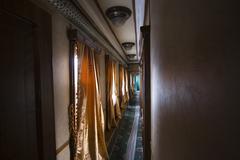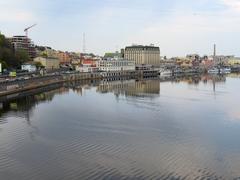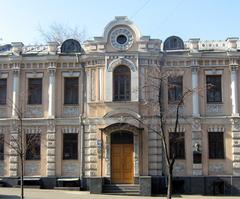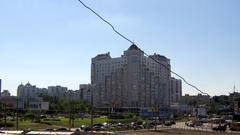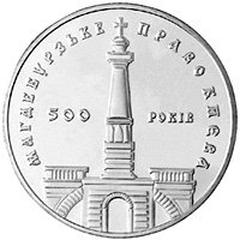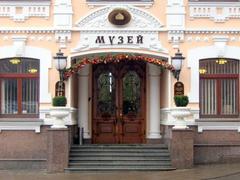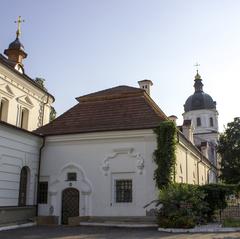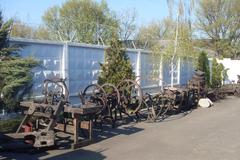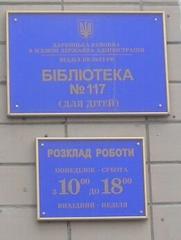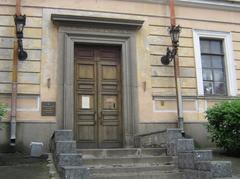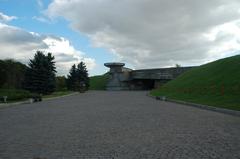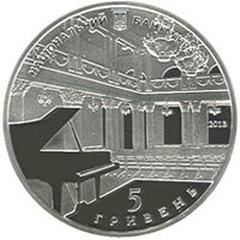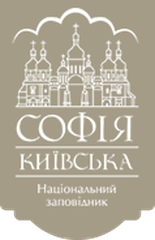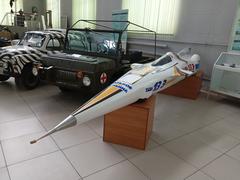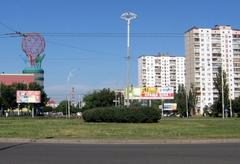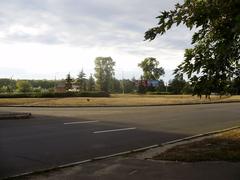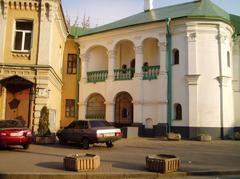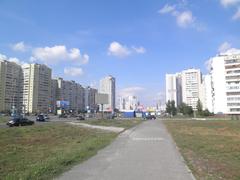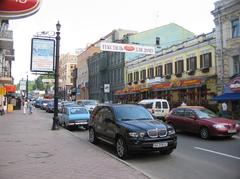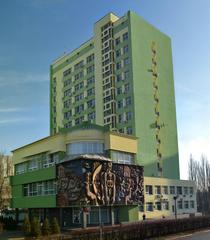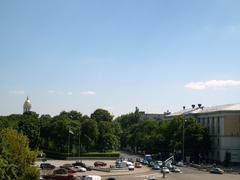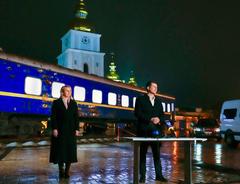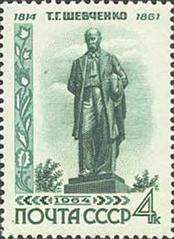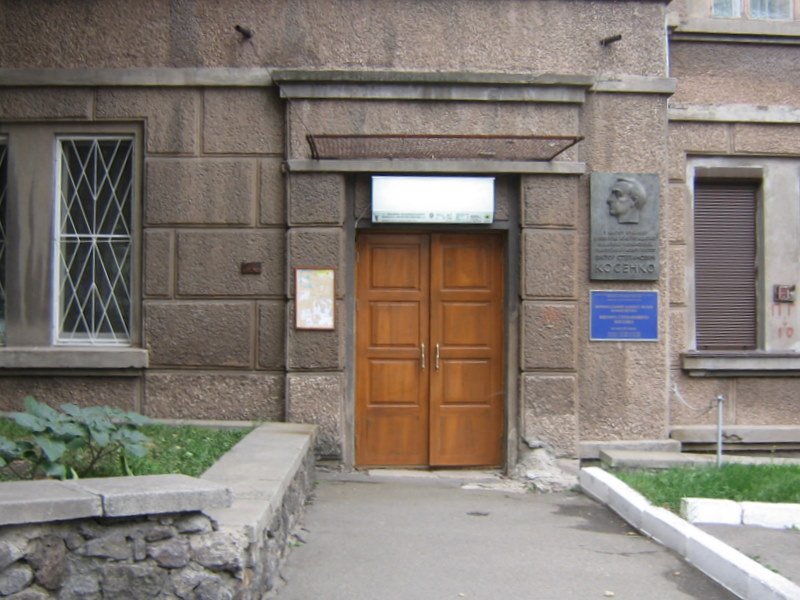
Victor Kosenko Museum: Visiting Hours, Tickets & Comprehensive Guide to Kyiv Historical Sites
Date: 14/06/2025
Introduction
The Victor Kosenko Museum in Kyiv stands as a testament to the life and legacy of Viktor Stepanovych Kosenko (1896–1938), one of Ukraine’s most influential composers, pianists, and music educators. Located in the very apartment where Kosenko spent his final months, the museum preserves the authentic atmosphere of a 1930s Ukrainian intellectual’s home. It serves not only as a memorial to the artist but also as a vibrant cultural hub in central Kyiv, welcoming music enthusiasts, scholars, and tourists eager to explore Ukrainian musical heritage and the broader historical landscape of the city.
For up-to-date details on visiting hours, ticket prices, special exhibitions, and upcoming events, visitors should consult the museum’s official website and trusted resources (biographs.org, Wikipedia, musical-world.com.ua).
Table of Contents
- About Victor Kosenko and the Museum’s Significance
- Early Life, Education, and Professional Career
- Compositional Legacy and Influence
- Museum Setting, Layout, and Atmosphere
- Visitor Information: Hours, Tickets & Accessibility
- Exhibitions, Multimedia, and Special Programs
- Travel Tips & Nearby Attractions
- Visitor Services and Recommendations
- FAQs
- Conclusion and Further Resources
About Victor Kosenko and the Museum’s Significance
Victor Kosenko is celebrated for his role in shaping Ukrainian classical music by blending Slavic folk traditions with Western European influences. His compositions range from evocative piano pieces to chamber and symphonic works, many of which have become staples of the Ukrainian repertoire. Kosenko’s time in Kyiv marked his most productive years, during which he influenced both his contemporaries and the future direction of Ukrainian music (biographs.org; Wikipedia).
The Victor Kosenko Museum preserves this legacy, offering an immersive experience into his personal and professional world. Established in the composer’s last residence, the museum is recognized for its authentic displays and active role in Kyiv’s musical life.
Early Life, Education, and Professional Career
Born in Warsaw in 1896, Victor Kosenko’s musical gifts were evident from an early age. By six, he could play Beethoven by ear, and soon began formal studies at the Warsaw Conservatory. His education continued at the Saint Petersburg Conservatory, where he studied under prominent figures, including Aleksander Michałowski and Alexander Glazunov, who waived his tuition in recognition of his extraordinary talent (biographs.org; Wikipedia).
Kosenko’s professional journey spanned Warsaw, Zhytomyr, and Kyiv. In Zhytomyr, he directed the music school and fostered a circle of artists, while his move to Kyiv marked a period of increased recognition and collaboration with leading Ukrainian musicians such as Levko Revutsky and Borys Lyatoshynsky (Wikipedia).
Compositional Legacy and Influence
Kosenko’s oeuvre is marked by its lyricism and the seamless integration of Ukrainian and Russian folk motifs. Works such as the “Album of Children’s Pieces” are widely used in music education, while his performances as a pianist garnered acclaim across the Soviet Union. He was instrumental in promoting Ukrainian composers and contributed to the compilation of Soviet folk songs, reinforcing a sense of national musical identity (biographs.org; youngcomposers.com).
After his death in 1938, Kosenko’s works continued to be performed and studied, and his grave at Baikove Cemetery remains a site of homage for admirers (biographs.org).
Museum Setting, Layout, and Atmosphere
The museum is located at 9 Mykhaila Kotsyubynskoho Street, Kyiv, in Kosenko’s preserved apartment. Its interior features:
- Living Room: Showcases Kosenko’s grand piano and original furnishings.
- Study: Displays manuscripts, letters, and personal memorabilia.
- Family Room: Contains personal items and family photographs.
- Exhibition Room: Exhibits include original scores, annotated manuscripts, a crocodile skin album with symphonic works, and rare photographs.
After a significant renovation in 2016, the museum now incorporates multimedia displays, allowing visitors to listen to Kosenko’s compositions and view interactive presentations (musopus.net).
Visitor Information: Hours, Tickets & Accessibility
Opening Hours:
- Tuesday to Saturday: 10:00 AM – 5:00 PM (last admission 4:30 PM)
- Closed Sundays, Mondays, and public holidays
- Hours may vary during special events; confirm via the official website
Admission Fees:
- Adults: 50 UAH (~$1.30 USD)
- Discounts for students, seniors, and children (30 UAH)
- Group tours and educational programs may require advance booking and separate pricing
Guided Tours:
- Standard tours in Ukrainian; English and Russian tours available upon request
- Tours last 45–60 minutes; advance booking recommended
Accessibility:
- The museum is in a historic apartment with limited elevator access. Visitors with mobility challenges should contact the museum in advance to arrange accommodations.
Contact:
- Address: 9 Mykhaila Kotsyubynskoho Street, Kyiv, Ukraine
- Phone and email available via musopus.net
Exhibitions, Multimedia, and Special Programs
The museum’s exhibits cover Kosenko’s personal life, compositional process, and cultural milieu. Highlights include:
- Annotated scores and first editions
- Personal artifacts and correspondence
- Audio guides and QR codes for streaming music
- Multimedia presentations on Kosenko’s life and works
Special events such as chamber concerts, lectures, and masterclasses are regularly held. Collaborations with local music schools and organizations enrich the educational program (musical-world.com.ua).
Travel Tips & Nearby Attractions
Getting There:
- Nearest metro: Universytet Station (Red Line), approx. 10-minute walk
- Several bus and trolleybus routes serve the area
Parking: Limited street parking; public transport or ride-sharing is recommended.
Nearby Sites:
- Taras Shevchenko National Museum
- National Opera of Ukraine
- Botanical Garden
- Museum of Theater, Music and Film Arts of Ukraine
Combining your visit with these landmarks provides a rich exploration of Kyiv’s cultural landscape.
Visitor Services and Recommendations
- Cloakroom: For coats and small bags; large items should be left at the entrance
- Restrooms: Shared with building tenants; facilities are limited
- Gift Shop: Offers books, recordings, and souvenirs
- Photography: Personal photos allowed without flash; professional photography by prior arrangement
- Family Visits: Children must be supervised due to the intimate setting
Tips:
- Book tours in advance, especially for groups or English-language tours
- Bring headphones for audio guides
- Check for concert schedules on the official website
- Confirm current health protocols before visiting
FAQs
Q: What are the Victor Kosenko Museum visiting hours?
A: Tuesday to Saturday, 10:00 AM – 5:00 PM; closed Sundays, Mondays, and public holidays.
Q: How much are tickets?
A: Standard tickets are 50 UAH; discounts for students and seniors.
Q: Is the museum accessible for visitors with disabilities?
A: Accessibility is limited; contact the museum for assistance.
Q: Are guided tours available in English?
A: Yes, with advance booking.
Q: Can I combine the museum visit with other Kyiv historical sites?
A: Yes, the location is central with many nearby attractions.
Conclusion and Further Resources
The Victor Kosenko Museum offers a rare opportunity to connect with Ukraine’s rich musical heritage through an authentic historical setting. With its central location, detailed exhibitions, and regular cultural events, the museum is a highlight for anyone interested in music, history, or Kyiv’s vibrant cultural scene.
For the latest information on visiting hours, tickets, and events, visit the official website and follow the museum’s social media channels. Enhance your visit with the Audiala app for curated music experiences and explore related articles on Kyiv historical sites to enrich your itinerary.
For further reading and resources on Viktor Kosenko’s life and works, see Ukrainian Live and the references below.
